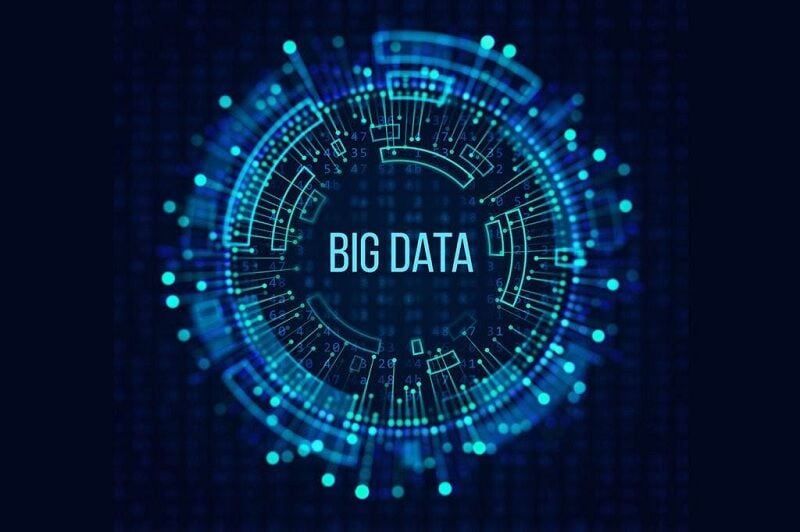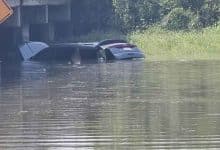Smart cities how technology is revolutionising urban living

Welcome to the inception of intelligent urban landscapes, a realm where technology has transitioned from merely enhancing to utterly transforming the urban experience. Envisage a universe in which advanced digital systems are manufacturing synthetic data to reflect real-world situations, providing invaluable input in areas where authentic data acquisition proves complex, expensive, or introduces risk.
Take, for example, the challenge of addressing potholes, a consistent issue plaguing city administrators and motorists alike. It is estimated that within the United Kingdom, the number of these road defects exceeds one million a staggering figure that serves only as an estimated value due to a deficiency in quantitative data demonstrating the depth and extent of the problem.
However, the advent of synthetic data is revolutionising the scenario. It provides us with the tools to modeling these urbanistic adversities, evaluate potential solutions and speed up the innovation process at a rate which was previously unfathomable. The more data we produce, the more accurately we can replicate genuine circumstances, and this brings us closer to achieving the goal of developing genuinely intelligent urban centres. Prepare yourselves for an extraordinary exploration into the future of urban habitation.
Exploring the concept of smart cities

Smart Cities denote the profound integration of advanced technologies into the fabric of urban development. These revolutionising entities employ innovative strategies and tools to reshape every thread of urban existence, fostering efficient, sustainable, and liveable habitats. By integrating technology and data into every aspect of infrastructure, smart cities optimise resources, minimise waste and boost the overall quality of life.
What are smart cities?
Smart cities capitalise on the power of digital, connectivity and information systems to improve urban environments. They hinge on a handful of core technologies, each potent and pivotal, morphing urban spaces into efficient, sustainable, and comfortable arenas. Smart cities alter how residents perceive and interact with their surrounding spaces, acting as catalysts for uber-modern urban development.
Using technologies ranging from the Internet of Things and sensors to advanced data analytics and AI, smart cities strive to solve urban issues uniquely. For instance, smart shelves laden with sensors empower businesses with real-time insights into product levels, expiration dates, and customer interactions. Such automated inventory management optimises the shelf-stocking process, prevents stockouts, and minimises waste.
How technology drives urban living
Smart cities undeniably herald a new dawn in urban living. Integral components of these technologically enhanced cities include smart transportation, energy management, waste management and public safety.
Smart transportation employs technology to streamline traffic flow, curb congestion and amplify public transportation. Real-time traffic monitoring, intelligent traffic management systems and smart parking solutions indeed exemplify this transformation. energy management optimises energy usage, reducing overall consumption. Tools such as smart grid systems, renewable energy sources, and energy-efficient buildings lead the forefront of this evolution.
Fundamental technologies underpinning intelligent urban centers

We hereby explore the principal technologies propelling the emergence of intelligent urban centers. Such technologies of paramount importance encompass artificial intelligence, Big Data, the Internet of Things, along with sophisticated connectivity solutions.
The role of AI and big data
Artificial Intelligence (AI) and Big Data are transforming and revolutionising urban management. When these powerful technologies ingest vast amounts of data from various city sensors and devices, they enable smarter decision-making processes. From analysing traffic patterns to optimising road usage, predicting utility demand to better manage resources, and even assisting in public safety by identifying potential high-risk areas, AI and Big Data’s capabilities are immense. Specially, AI-driven analytics significantly contribute to urban planning, helping city planners navigate complex issues like population growth patterns, environmental impacts, and infrastructure needs. However, using AI and Big Data responsibly matters – ensuring that ethical considerations such as privacy and fairness are addressed is crucial.
The impact of the internet things on urban infrastructure
The Internet of Things occupies a pivotal position in the creation of sophisticated urban environments, commonly referred to as smart cities. By incorporating advanced methodologies like the IoT into urban infrastructure and associated services, metropolitan landscapes have the ability to radically alter the manner in which we reside, perform our vocational duties, and engage with our environment. The IoT, primarily responsible for driving these transformations, is a network that comprises interconnected entities ranging from motor vehicles to architectural structures, each equipped with embedded sensory devices, software applications, and networking capabilities. Such interconnectivity facilitates these entities in collating and disseminating data, thereby sparking technological advancement across various domains, including but not limited to transportation, healthcare, industrial manufacturing, and agricultural processes.
Advances in connectivity 5G and beyond
Taking a leap forward in connectivity, 5G is setting new norms for data transmission speeds. The elevation of network speeds is particularly beneficial for urban living, where the demand for high-speed internet and real-time data transmission is perennial. These upgrades enable seamless communication between different devices, and deeper penetration of the Internet of Things into our daily lives, boosting smart city development. But always remember, the journey doesn’t stop at 5G, advances in connectivity go on and beyond, with architects of smart cities constantly looking out for the next big piece of technology.
Enhancement of metropolitan transport and mobility
The sphere of metropolitan transportation and mobility is experiencing a significant metamorphosis due to the introduction of smart urban technologies. Preeminent among these technologies are Electric and Autonomous Vehicles alongside Intelligent Traffic Management Systems.
Integrating autonomous and electric vehicles
In efforts to augment smart city infrastructure, autonomous and electric vehicles emerge as game-changers. These vehicles seamlessly integrate into the urban fabric, interacting with smart traffic signals and other IoT-enabled elements. This interconnectedness fleshes out route optimisation, slashes wait times, and aligns with the broader objectives of an efficient public transport experience.
Most autonomous vehicles adopt an electric or hybrid model, contributing significantly to the reduction of urban carbon emissions. Beyond this, they underscore accessibility. Designed with an intent to cater to often sidelined communities, these vehicles boast user-friendly features catering to passengers with mobility challenges. Thus, they’re not only transforming mobility but fostering inclusion.
Smart traffic management systems
Stepping into the intersection of technology and transportation, smart traffic management systems symbolise another cornerstone of smart cities and how technology is revolutionising urban living. Through the deployment of advanced sensors and real-time data analytics, these systems aim to streamline traffic flows and curb congestion.
Vehicles equipped with 5G connectivity engage in constant communication, optimising routes and minimising travel time. Taking Singapore as an example, their Smart Mobility 2030 initiative sees an integration of 5G-enabled autonomous shuttles and electric buses, leading to real-time traffic management.
Such intelligent transit systems mark a promising leap towards sustainable and efficient cities, transforming urban mobility into a smart, seamless, and remarkably inclusive experience.
Enhancing urban sustainability and energy management

Bridging the knowledge from previous sections into more specific areas of urban sustainability and energy management, we delve into the heart of revolutionary aspects of a smart city.
Smart energy grids and renewable resources
Fundamental to sustainability in smart cities lies an intricate mesh of Smart Energy Grids. This interconnected network emanates from renewable resources, redefining city infrastructure. Imagine a grid system that doesn’t merely distribute power but dynamically responds to the variances in energy demand, simultaneously optimising its operations. It harbingers a new era of efficiency, driving down energy-related costs.
ISO 50001, implementing Energy Management Systems, provides a good instance of such advanced system integration. Paired with Renewable Resources such as solar and wind energy, city grids evolve from simple power distributors to smart, self-regulating systems. It’s noteworthy that The Edge building in Amsterdam applies these principles, integrating a broad array of IoT sensors to tune energy usage, temperature, and lighting. The culmination? A highly sustainable, user-friendly workspace.
Innovations in waste management and water usage
Moving alongside energy, Waste Management too sees a digital revolution in smart cities. Cutting-edge technologies leverage IoT for intelligent waste collection systems and recycling programs. Marrying tech with waste not only smartens disposal but also fuels the circular economy, contributing to sustainability in the long run.
Rounding off this discussion, we consider how the same principles of smart, data driven management also applies to water usage. Through the oversight of connected devices and sensors, cities can monitor and control water utilisation. The result? An optimised allocation of resources, mitigating environmental impact while fostering sustainability. This evidence-backed approach, akin to the application of credit risk analytics, ensures a paradigm shift: from wasteful usage to careful allocation of resources.
Want to no more, Thailand’s official year-end population is lower than in 2021, and females outnumber males again. In November 2022, the US lauded Thailand’s family planning initiatives with Sathit Pitutecha, the deputy minister to the Ministry of Public Health, commenting on the success of its birth control policies, only to say that the country now needs to focus on increasing its population size.
Latest Thailand News
Follow The Thaiger on Google News:


























